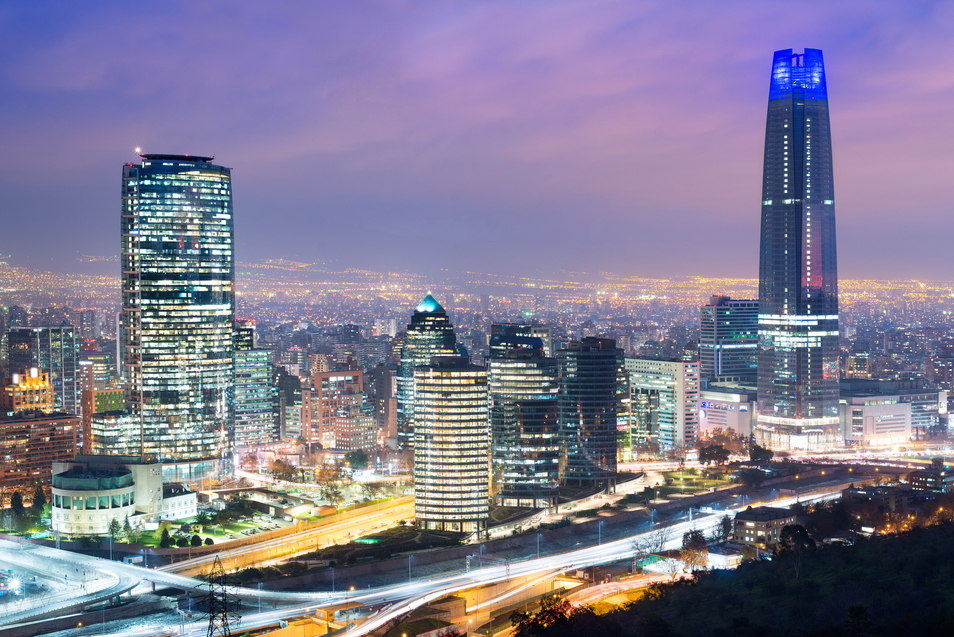Back in May, I wrote about the heart-breaking descent of Venezuela from relative prosperity into socialist destitution. The humanitarian catastrophe unfolding in the Latin American nation should serve as a warning to everyone – don’t try this at home!
Yet socialism is very much alive in the least likely place – Chile. Chile, the poster child for the benefits of economic liberalization, is experiencing a resurgence of the Left. Why? To answer that question, let us look at the state of affairs in both countries.
Chile was one of the poorer Latin American countries until relatively recently. In 1950, for example, its average annual income per capita (PPP) was a mere 38 per cent of that of Venezuela – Latin America’s richest nation. That’s where things stood, when a Castro-inspired socialist, Salvador Allende, was elected as Chile’s 30th president in November 1970.
He proceeded to nationalize industry and collectivize agricultural land, which led to shortages and mass protests. Inflation rate rose to 600 per cent and poverty increased to 50 per cent. Parliament urged Allende to desist, while the Supreme Court declared his actions unconstitutional.
Allende ignored both of them. In 1973, parliament called on the military to restore constitutional order, which the later did by bombing Palacio de La Moneda and killing Allende in the process.
Today, the black and white images of a stern-looking General Augusto Pinochet, the leader of the military junta that ran Chile after Allende’s demise, evoke the human rights abuses that ensued. Yet, it should be possible to separate the murder of between 1,200 and 3,200 of the government’s opponents from the economic reforms that Pinochet undertook. The former was inexcusable. The latter was beneficial in that it turned Chile into Latin America’s richest country and, eventually, a full-fledged democracy.
Here, a short digression is in order. On a previous occasion, I have been critical of those, such as Barack Obama, who have acknowledged the human rights abuses on Cuba, while praising the “achievements” of the Castro regime. At the risk of opening myself to charges of hypocrisy, I wish to argue that Chile and Cuba are different in some crucial respects.
By definition, dictatorships that liberalize their economies exercise less control over the lives of ordinary people than dictatorships that maintain economic control.
As people grow rich, they tend to create alternative centers of power and authority flows away from the state. Thus, market-friendly dictatorships, such as Chile, Indonesia, Mexico, South Korea and Taiwan ended up not only prosperous, but also democratic. Socialist dictatorships, such as Cuba and Venezuela, maintain economic control, which prevents not only enrichment, but also democratization.
Simply put, when the government is the sole employer, it is nearly impossible to dissent and demand political rights.
As the 1980s progressed, opposition to Pinochet stiffened. The general lost a 1988 referendum that would have extended his stay in office and he relinquished power in 1990. A succession of governments maintained the free-market reforms introduced under Pinochet and the country prospered.
Between 1974 and 2016, average annual GDP per capita (PPP) rose by 230 per cent. It shrunk by 20 per cent in Venezuela.
Today, Chileans are 51 per cent richer than Venezuelans. Unemployment in Chile stands at 6 per cent. In Venezuela it stands at 17 per cent. Chile’s inflation is 3 per cent and Venezuela’s 487 per cent. In 2016, the Chilean economy grew by 2.7 per cent. It shrunk by 10 per cent in Venezuela. Chile’s debt is 17 per cent of its GDP. Venezuela’s is 50 per cent.
In 1974, life expectancy in Venezuela was 1 year higher (66) than that in Chile (65). In 2015, an average Chilean could expect to live 8 years longer (82) than an average Venezuelan (74). In 1974, infant mortality in Chile was 60 out of 1,000 live births.
In Venezuela, it stood at 43. Since then, Chile reduced infant mortality by 88 per cent (to 7) and Venezuela by 70 per cent (to 13). Last, but not least, Chile has received a perfect score (10 out of 10) on a democracy index compiled by the Center for Systemic Peace, while Venezuela languishes at 4 out of 10.
Yet, for a number of reasons, socialism in Chile is on the rise. The extreme Left in Chile is, after Cuba, the second most radical in Latin America. It is not particularly popular – the communists polled only 5 percent at the last election – but it is good at mobilizing its supporters. Communists, furthermore, are a part of the governing coalition and thus able to exert influence on the policies of the Left-wing President Michelle Bachelet.
The Left has never accepted the “Chilean model” because it was imposed by Pinochet and that makes it, in the eyes of the Left, illegitimate. It does not matter that it works. The same goes for the Chilean Constitution, which the Left is trying to rewrite, and the semi-private education system, which the Left wants to nationalize.
Moreover, the media is very Left-wing and its reporting gives an impression that there is much more dissatisfaction in Chile than there really is. Young people, who grew up in a free society, don’t remember the failures of the Allende era.
They clamor for free education, like in Western Europe, not realizing that Chile is still a developing country. With 7 percent of the population living in poverty, the country needs to focus on growth, not redistribution, and high taxes and high spending reduce growth in the long run.
The small government advocates are not blameless either. They assumed that the battle of ideas was over and thought that the positive outcomes of the Chilean model would speak for themselves. They did not think that there was a need to defend it. Moreover, center-Right political parties have been browbeaten into submission; whoever speaks out in defense of the Chilean model is tainted as a Pinochet apologist.
Yet for all of Pinochet’s crimes, Chile works. The same can’t be said of Venezuela, let alone Cuba. It would be a shame if Chile were to suffer, just because of the brutal nature of the regime that set the country on a path to freedom and prosperity.
This article first appeared in CapX.



